Okra is a crop that does not need fertilizers and can develop properly if the soil is fertile. Now, if the soil is somewhat poor or we want better yield in the crop, some fertilizers can help. Since Okra is grown for a long time, the soil is deficient in nutrients after some time. Once you harvest the first crop, fertilizing the soil will help other batches of Okra. Let’s check out the best fertilizer for Okra.
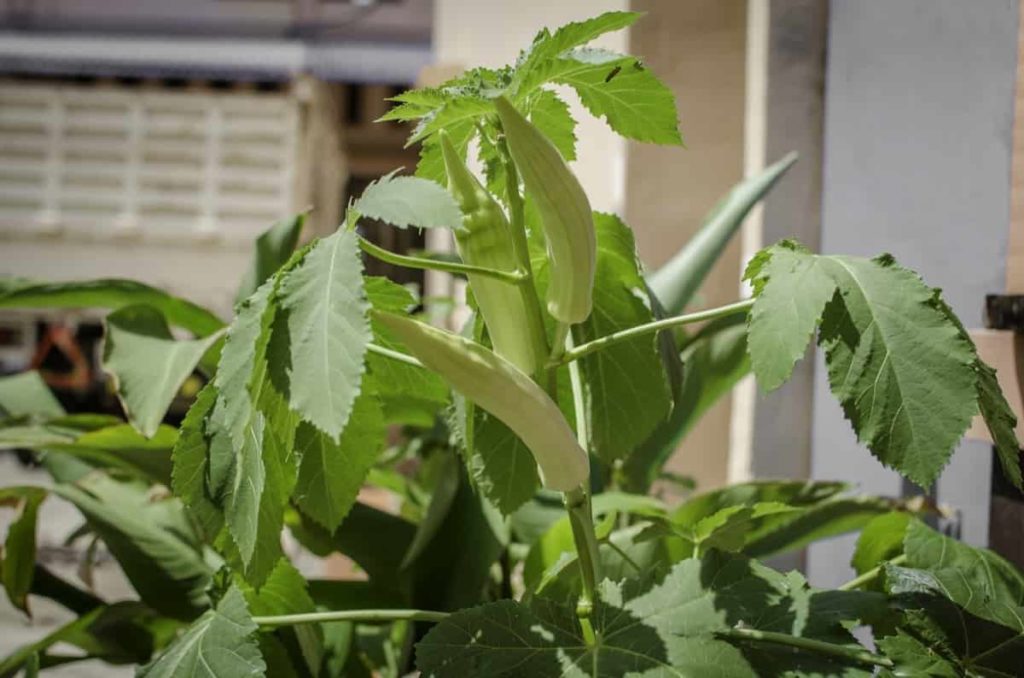
One of the advantages of fertilizing Okra is that it will help improve production. Fertilizing with the right NPK ratio can also help improve the overall quality and taste of your crop. It is important to note that different crops have different nutrient requirements, so you choose a fertilizer for Okra accordingly. Another advantage of fertilizing Okra is that it can help suppress pests and diseases.
By providing nutrients to the plants they need, you can make them less susceptible to these problems. Finally, fertilizing helps ensure that your plants are getting the nutrients they need for the best growth and health. The first and most important thing you should know about fertilizing Okra is the time. You need to start feeding your plants immediately after they grow or they will die before they reach maturity.
Best fertilizer for Okra
Homemade and organic fertilizers for Okra
Coffee grounds
Coffee grounds are a suitable organic modification for growing Okra when used directly on the ground or in composted materials. Coffee ground helps improve soil structure, and soil nutrients when used in association with other organic modifications.
In case you miss this: Okra Planting Frequently Asked Questions (FAQs)
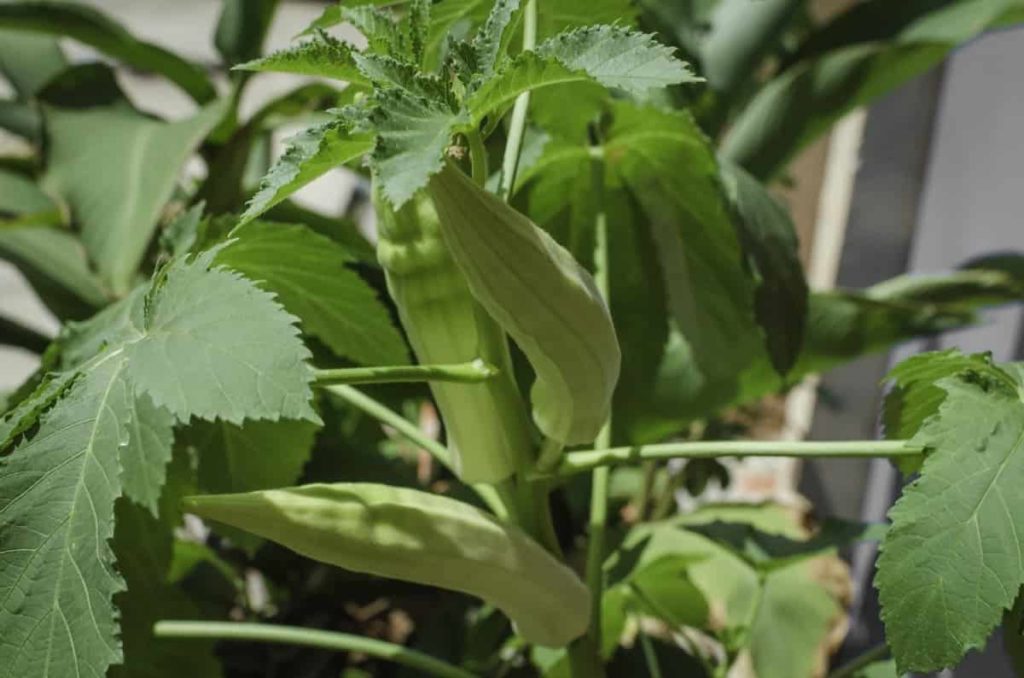
Wood ash
Wood ash and the cocoa husk were most effective in improving Okra pod weight, pod nutrients, length of roots, and soil fertility. While rice bran and sawdust were the least effective.
Neem cake
Neem cake powder will provide Okra with the best nutrients organically. Neem cake works as the best pest protection with a good amount of NPK in your Okra plant.
Eggshells
Okra plants absorb calcium from eggshells and most grow free of problems. Sprinkle the eggshell powder around the base of your plants.
Liquid fertilizers for Okra
Fish emulation
Fish emulations are a good organic fertilizer option for Okra. A simple option is to use water-solving fertilizer and apply it when you water your plants. After Okra reaches 6 inches of plant height, you should need to use water-soluble fertilizer every 4 to 6 weeks. Using fish emulation on Okra plants is also an easy process. Fish emulation always needs to be diluted with water. Pour this mixture into a spray bottle and spray directly onto the leaves of the Okra plants.
Compost tea
Compost tea is the best fertilizer for Okra plants. When using in the garden, apply once every two weeks after transplant. Water every transplant with a quarter of a gallon of compost tea, but make sure to soak the leaves a little as you do.
In case you miss this: Okra Growing Tips, Ideas, Secrets, and Techniques
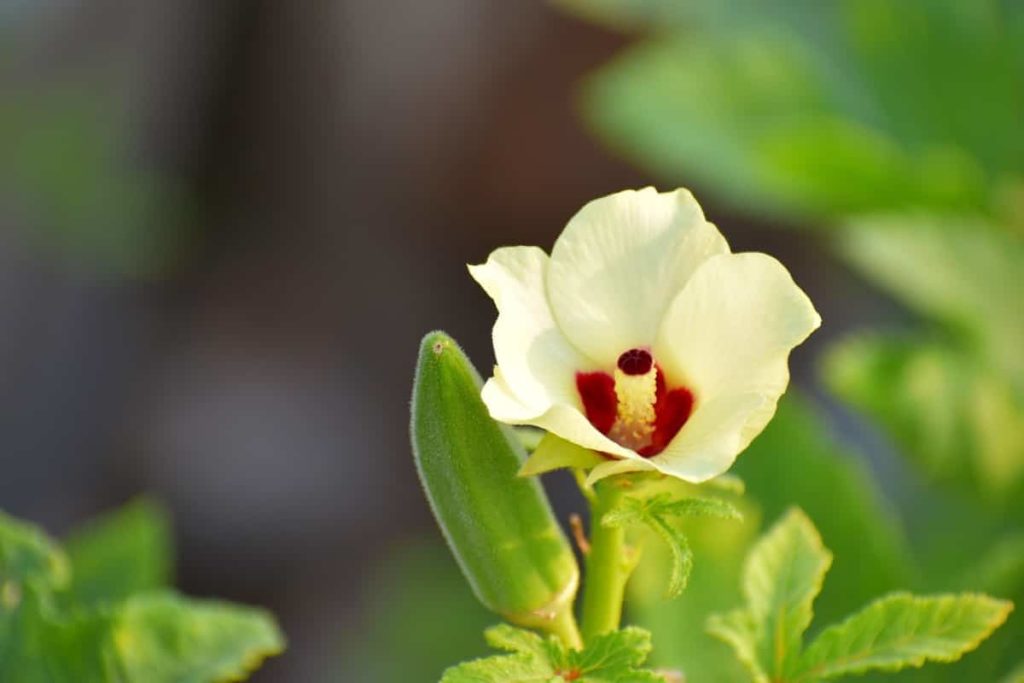
Compost Manure for Okra
Compost
It improves soil structure, loosens the soil, and helps sandy soil to maintain water. Compost increases soil fertility and feeds microorganisms that are essential for healthy soils. If you are interested in growing Okra organically, you can modify the soil with compost before planting. Another option that can sometimes help improve the growth of the Okra plant is some organic fertilizer. The most common fertilizers are animal fertilizers. You can Increase the okra pod production from rabbit manure, cow dung, chicken manure, pig manure.
Farmyard manure
Partially rotten farmyard manure has to be applied three to four weeks before sowing. For Okra you can apply more than 20 tons per hectare.
Chicken manure
Chicken manure can also be used instead of chemical fertilizers. Chicken manure is high in phosphorus and potassium which are important components of crop production. Chicken manure that is processed does not have an odor.
Commercial fertilizers for Okra
NPK ratio
Different NPK ratios are available for Okra fertilizers. The most common is the 10-10-10 ratio, which means that fertilizer has 10% nitrogen (N), 10% phosphorate (p), and 10% potassium (K). When choosing the NP ratio for your Okra fertilizer, be sure to consider the needs of the plant. Use 2 to 3 pounds of fertilizer such as 10-10-10 or 15-5-10 for every 100 square feet of the garden area before planting. Spread the fertilizer evenly in the area, and then mix it well over the soil in 3 to 4 inches.
In case you miss this: Okra Seed Germination, Time, Temperature, Light
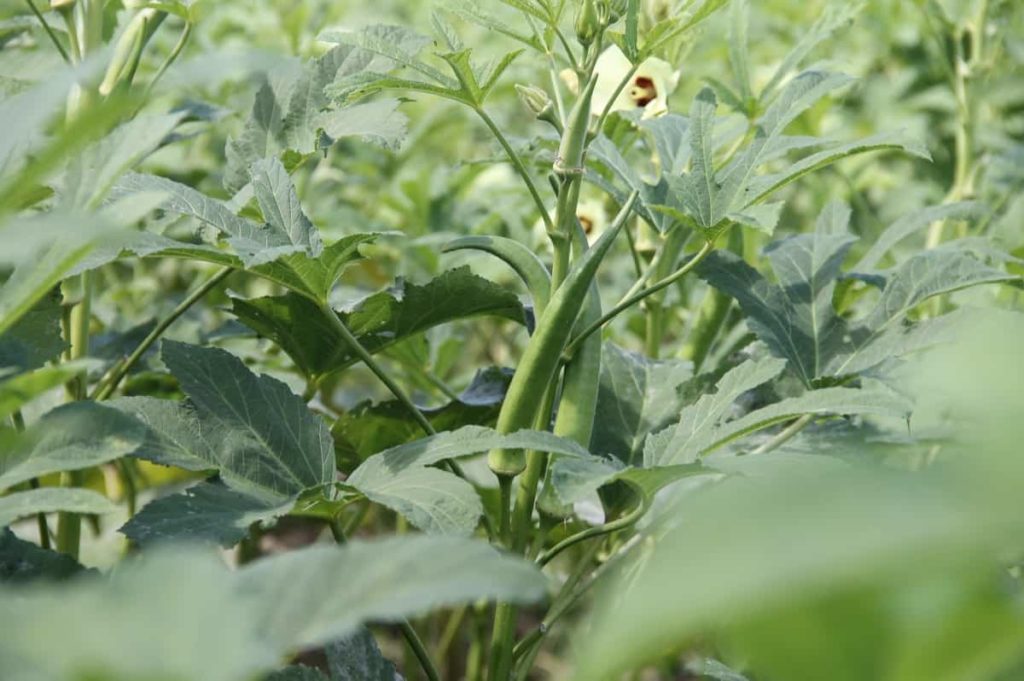
Okra fertilizer schedule
- Mix the homemade fertilizer or 10-10-10 fertilizer for Okra into the soil with the shovel before planting up to a depth of 4 inches, about 3 ounces for every 100 square feet area. The numbers on the fertilizer label indicate the percentage of three main nutrients: nitrogen, phosphorus, and potassium. 10-10-10 is called a balanced fertilizer containing equal amounts of these three main nutrients. If you are using homemade fertilizer for Okra, such as fertilizer, apply very little. Usually only a few inches or a cup for every 10 feet row.
- Side dress plants with fertilizer when Okra plants are 6 to 8 inches long and then two to three weeks later. Side dressing is a way to provide fertilizer as needed during periods of extremely vigorous growth. Dig a shallow trench of about six inches from the base of plants and apply granule fertilizer to the bottom of the trench after package instructions for appropriate quantities. Cover the manure with soil. Water the trench thoroughly to allow the fertilizer to dissolve and soak in the root area.
- Reapply the fertilizer every four to six weeks during the growing season (perhaps more often when the Okra grows in containers). Irrigate the soil whenever you apply fertilizer.
- If there are heavy rains in the increasing weather, apply extra fertilizer as a side dressing. Heavy rains can wash away previous applications of fertilizer which eliminates soil of nutrients for plants. Be aware when growing Okra in containers that nutrients will be lit more quickly. This may result in you needing to reapply fertilizer more often.
Fertilizing tips to increase the yield of Okra
- Apply well rotten cow dung 120 to 150 quintals as a basal dose. Overall, the Okra crop needs Nitrogen 36 kg per acre in the form of Urea 80 kg per acre. Apply half the dose of nitrogen at sowing and remain after the first picking of the fruits.
- To get a good yield, spray 19-19-19 with micronutrients 2.5 to 3 grams per liter water 10 to 15 days after sowing. Repeat the spray of water 19:19:19, 4 to 5 grams per liter after 10 to 15 days of the first spray.
- To get good flowers and fruits, take 00-52-34, 50 grams per 10 liters of water spray before the onset of flower followed by another during the fruit formation phase. To increase production and achieve good quality, spray with 13-00-45 (potassium nitrate) 100 grams per 10 liters of water at the fruit development stage.
In case you miss this: Lady Finger Plant Diseases, Pests, Spacing (Okra/Bhindi)
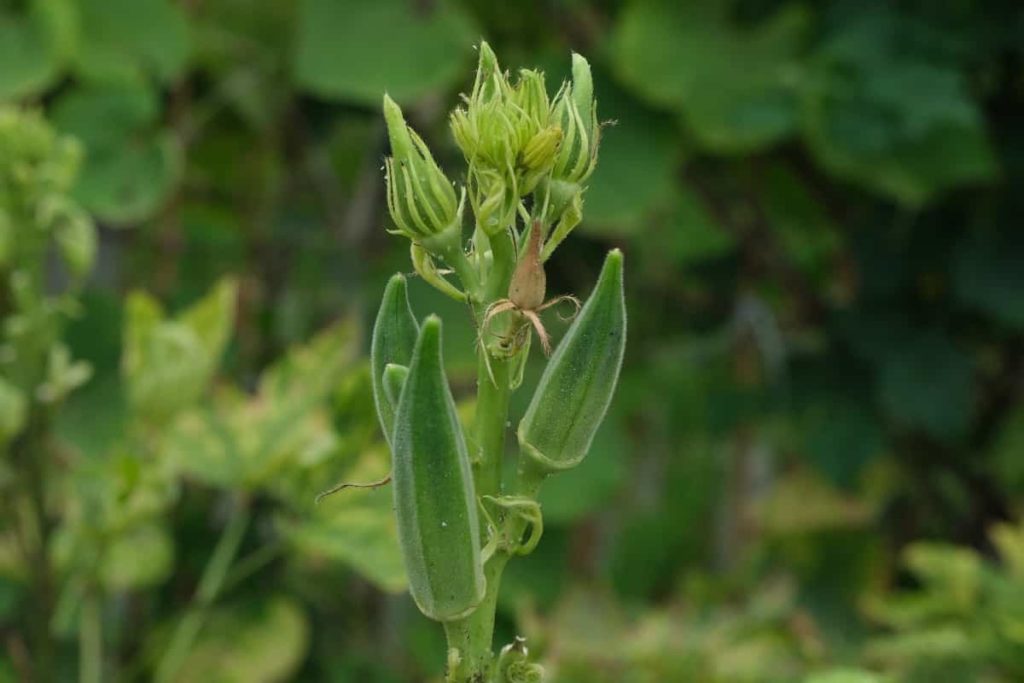
How to fertilize Okra in pots
Initially, you should mix composted manure or compost in soil to provide nutrients to your Okra plants. You can also side-dress your Okra plants with fertilizer in the growing season for additional nutrients. Another option is to add balanced granular fertilizer at the time of planting. Mix it well in the soil. When the plant is 6 inches long, you can apply another dose of balanced fertilizer.
Make sure your soil doesn’t have too much nitrogen as it can encourage extra vegetative growth rather than focusing on fruit. Apply side-dressing towards nitrogen fertilizer at least once during the growing season, such as when plants are about 8 inches long and then a few weeks later.
Nitrogen sources include urea and chicken manure, regular compost application can provide essential nutrients without a specific source of nitrogen. General guidelines for side dressing fertilizers suggest 5 tablespoons for every 10 feet in the garden row, so 1/2 tablespoon nitrogen fertilizer benefits a plant in a 12-inch container.
Commonly asked questions about fertilizers for Okra
Does Okra like nitrogen?
Okra likes small amounts of food all season long. Remember that too much nitrogen damages the production of Okra, so it is better to add very little nitrogen.
Is urea good for Okra?
The increased growth and production of Okra in the application of urea fertilizer and goat fertilizer is due to the increased availability of organic matter and nutrients in the soil. Urea may have also increased microbial activities.
In case you miss this: Growing Okra Hydroponically from Seed; Planting; Care
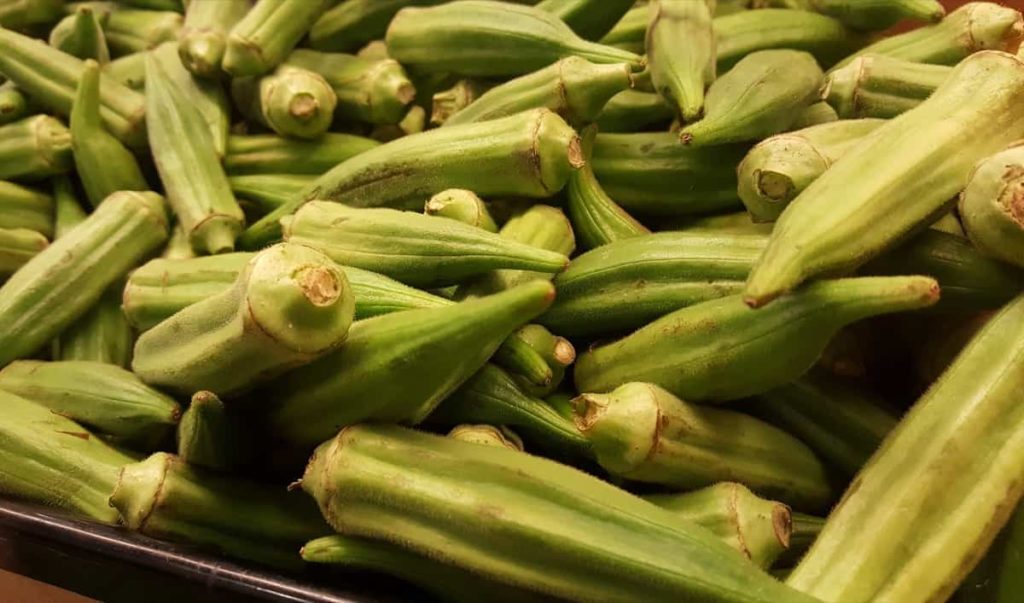
How do you increase the production of Okra?
The use of organic fertilizer will help in boosting Okra pod production. Adding fertilizer around the plant base in the middle of the season will give it a boost so that it can continue to produce.
Why is my Okra growing so slow?
Because of dehydration or nutritional imbalance. The unopened Okra can be dehydrated. When compared to other plants Okra should be more drought is tolerant, but watering it will keep it healthy and can make it more productive.
Is the Epsom salt good for Okra?
The Epsom salt is made from magnesium, two ingredients that the Okra can benefit from. However, caution is needed when it comes to applying Epsom salt to Okra, as it can easily kill Okra plants when applied more. Use general fertilizer instead of applying Epsom salt for Okra.
- How to Grow Tomatoes Organically at Home: A Comprehensive Guide
- Organic Gardening on a Budget: Low-Cost Methods and Materials
- Gongura Seed Germination and Planting Methods
- Cabbage Seed Germination and Selection
- Broccoli Seed Germination and Selection
- Asparagus Seed Germination and Variety Selection
- Seasonal Flower Gardening: Best Practices for Spring, Summer, Fall, and Winter
- How to Grow Hibiscus from Flower
- Plantation Ideas for Home Decoration: A Beginners Guide
- Flower Garden Designs and Layouts for Beginners
- Planting and Spacing Techniques in Papaya: A Beginner’s Guide
- Growing Gold: Essential Techniques for Planting Pineapples
- How to Make Kalanchoe Plant Bushy: Home Remedies and Solutions
- 11 Reasons Why Your Gardenia is Not Blooming: Home Remedies and Solutions
- Eco Elegance: The Guide to Designing a Drought-Tolerant Landscape
- Gardening on a Slope: Strategies for Hillside Landscaping
- Nourish and Flourish: Top Organic Mulches for Thriving House Plants
- Everything You Want to Know about Indian Mogra Flower: Discover Uses and Growing
- Green Thumb Success: Expert Tips for Cultivating Greenhouse Pumpkins All Year Round
- Maximize Growth & Flavor: The Ultimate Guide to Companion Planting in Herb Gardens
- How to Control Rhododendron Problems Naturally: Home Remedies and Organic Ways to Fix Them
- Natural Magic: The Remarkable Benefits of Cinnamon for Plants
- Best Steps to Revive Dying Tulip with Natural and Organic Treatment
- 10 Reasons Why Your Angel Trumpet is Not Blooming: Remedies and Treatment
- How to Fix Periwinkle Leaf and Flower-Related Problems: Natural Remedies and Solutions
- How to Fix Zinnias Leaf and Flower Problems: Discover Natural and Home Remedies
- Organic Steps to Induce Lemon Tree Flowers: A Comprehensive Guide
- Bloom Booster: Crafting the Perfect Homemade Bougainvillea Fertilizer
- Optimizing Growth: A Guide to Applying NPK Fertilizer for Potted Plants
- 10 Best Homemade Fertilizers for Rubber Plant: DIY Recipes and Application Method
- How to Boost Female Pumpkin Flowers: Effective Steps for More Flowers and High Yields
- Transform Your Indoor Garden: Top Benefits of Pink Salt for Houseplants
- 10 Best Homemade Fertilizers for Peacock Plants (Calathea): Easy DIY Guide
- Unlock Blooms: 9 Reasons Why Your Potted Chrysanthemum is Not Blooming
- 8 Reasons Why Your Potted Hibiscus is Not Blooming: Fix it with Simple Solutions
- Unlock Blooms: 9 Key Reasons Your Potted Frangipani Won’t Flower